When REI first approached me to review the BioLite stove, I was a little hesitant. The BioLite uses wood as its fuel source, not white gas, propane or butane like other camp stoves I’ve used in the past. While I liked the idea of a stove that uses a sustainable fuel source, I wasn’t 100% convinced it would be reliable. After some time testing the stove, performance proved to be no issue.
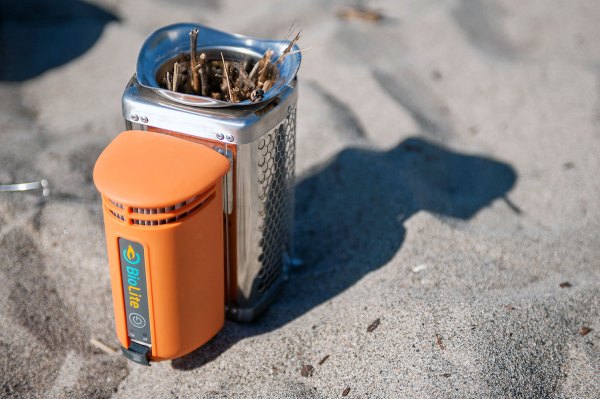
So, before I dive into my BioLite Wood Burning CampStove field test, let’s look at the obvious advantage that immediately got my attention: While I love the reliability of white gas, propane and butane, these fuel sources can be a pain in the neck. To my knowledge (and according to the TSA website as of today), no airline in the U.S. allows you to fly with any of these fuel sources (carry-on or checked). Having to source your fuel upon arrival at your destination adds uncertainty to a trip. I know this isn’t a problem if you’re going to a major outdoor hotspot, but sometimes when going off the grid, it can be near impossible to find a particular make of fuel. With the BioLite, this problem is completely removed. It’s rare that I’ve been to a place that doesn’t have a supply of wood nearby. That said, I would recommend that you carry a small saw or at least a good pocketknife if using this stove. I found that the BioLite could only accommodate small twigs in the fuel chamber. Not a big deal, but in some locations, that may mean breaking down larger twigs into more manageable sizes.
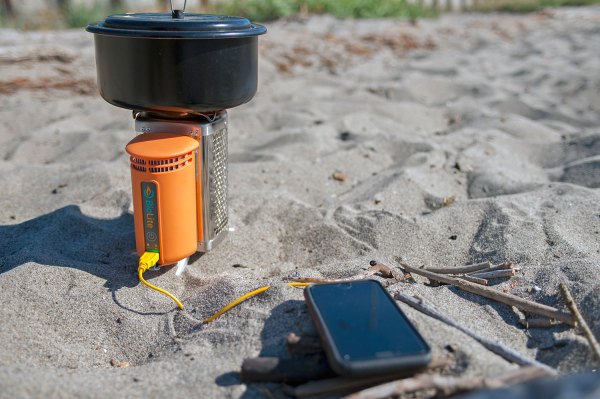
On top of the benefit of not needing to worry about fuel sources, the BioLite offers another unique feature that’s a first for me–a USB charger built into the stove that generates its energy from the stove’s own heat. The BioLite comes stock with a standard USB (Type A) cable for charging the internal battery. Test out charging cords before you leave home to make sure you are fully equipped to recharge the devices. For backpackers and campers looking to save weight in their packs, this is a huge saver. No need for extra batteries or solar charging panels for your technology. Simply plug in your phone, camera, GPS or other device while dinner’s cooking, and you’re set. Just keep feeding the stove with more wood and your device will charge away.
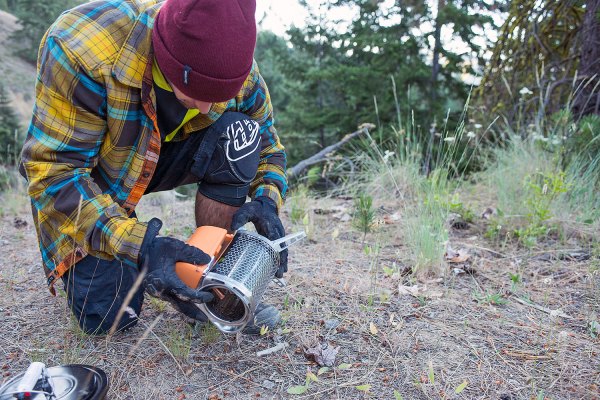
Ok, on to testing the BioLite. When first unpacking the stove, everything is nicely organized and nests neatly within itself. The provided stuff sack easily fits the stove, the charger/fan pack and any other incidentals you might need (fire starter, lighter, etc.) A first look at the stove bottom revealed three fold-out legs that form a tripod base. While not incredibly wide, this made it more stable than a lot of stoves I’ve tried. I tried placing it on dirt, rock and sand and was able to balance it quite easily in all locations. The stove comes stocked with a detachable potholder that clips to the top of the fuel chamber. This was a weak part in the design for me. The clip didn’t go on easily and I had it pop off once while in the process of setting a pot on top of it. I was able to place a pot of water on top of the stove without it… so, more of a nuisance than a real worry. Maybe you don’t even need the potholder clip at all. Save yourself a little weight and forget it all together! But definitely test this theory before you take out into the field.
A small note: If you’re a neat-freak like I am, you may find this stove to be a little dirty. Having to rely on natural fuel sources, the BioLite builds up a noticeable amount of soot. Much more than I’m used to from a white gas or butane stoves. I found the stove to be pretty messy after only a couple uses, though I tried to keep it clean. I know this isn’t an issue at all for most people as it’s cosmetic, but I thought it worth mentioning.
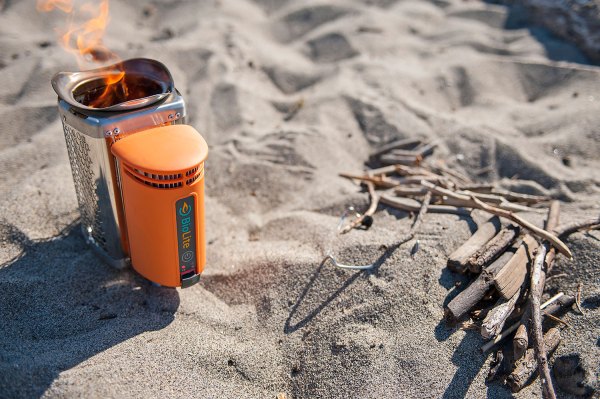
On to performance testing for the BioLite. The stove performs exceptionally well. In a water-boiling test, I found that 500ml (16.9 ounces) of water, at room temperature, would boil in 3 minutes 50 seconds with the BioLite stove. The time on the BioLite would have been even quicker had I not had to stop and add more wood to the fire…oops!
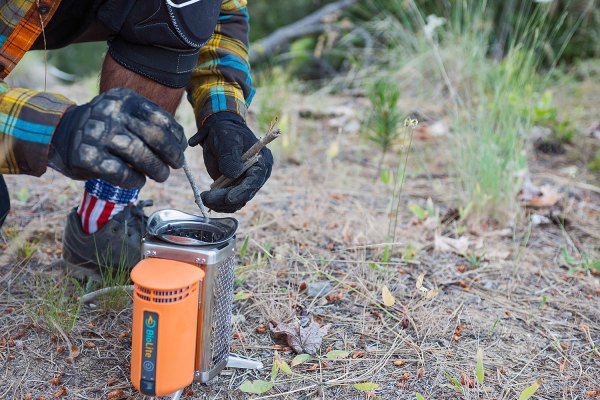
The orange blower fan/charging unit that attaches to the stove is impressive. The fan drastically adds to the stove’s performance by forcing oxygen into the fire, generating a quick-burning fire. I was surprised at how quickly kindling ignited and was consumed… so surprised that during my boiling test, I underestimated how much fuel the stove would go through in such a short amount of time! A note about the blower fan: it does require that you plan ahead and charge the fan before you head out for best performance. If you do forget to charge the fan, the stove will eventually self-charge once you get a fire going, but you’ll have to wait for the stove to burn for a while before that charge begins to take.
I know it mentions this in the directions, but it’s something I instantly forgot when I set it up for the first time: Check your wind direction and orient the orange blower/charger pack facing into the wind (so the flames blow away from it). On my first outing with the BioLite, I set it up, forgot to do this and then panicked when I realized the flames were about to melt the fan unit.
For the same reason that I love the natural fuel concept of the BioLite and the weight it saves you in fuel, I’m also a little leery of it. On trips when it’s pouring rain (or in the winter), finding dry fuel could prove to be a very difficult task. Additionally, there’s the risk of encountering burn bans in dry environments (which I encountered on one test outing in Eastern Washington). While burn bans may have a loophole for cooking stoves, they don’t cover the burning of wood.
The BioLite comes with a five-pack of fire starters to help light the stove. Once lit, these burn quickly and definitely help in starting a fire in the stove. However, they are difficult to get started if it’s windy. It took me a few minutes when testing to get one lit because of wind. I might consider bringing another fire starting aid or a strong butane lighter if you’re going to be in a windy or wet environment.
I was generally impressed with the BioLite stove. It performed well in the tests I put it through and held up strong (even outperforming the competition) in a side-by-side comparison with my normal backpacking stove. Check it out if you get the chance and see if it’s a good fit for your backpacking stove needs.
Still not sure? REI experts share how to choose backpacking stoves.
